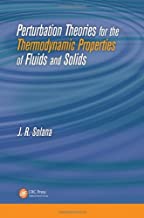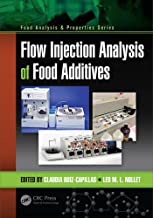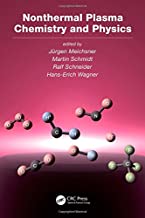Introduction to Pharmaceutical Chemical Analysis
Original price was: ₹7,469.10.₹5,975.28Current price is: ₹5,975.28.
ISBN: 9780470661222
Author/Editor: Steen Honore Hansen
Publisher: John Wiley
Year: 2012
1 in stock (can be backordered)
Description
This textbook is the first to present a systematic introduction to chemical analysis of pharmaceutical raw materials, finished pharmaceutical products, and of drugs in biological fluids, which are carried out in pharmaceutical laboratories worldwide. In addition, this textbook teaches the fundamentals of all the major analytical techniques used in the pharmaceutical laboratory, and teaches the international pharmacopoeias and guidelines of importance for the field. It is primarily intended for the pharmacy student, to teach the requirements in analytical chemistry for the 5 years pharmacy curriculum, but the textbook is also intended for analytical chemists moving into the field of pharmaceutical analysis.
* Addresses the basic concepts, then establishes the foundations for the common analytical methods that are currently used in the quantitative and qualitative chemical analysis of pharmaceutical drugs * Provides an understanding of common analytical techniques used in all areas of pharmaceutical development * Suitable for a foundation course in chemical and pharmaceutical sciences * Aimed at undergraduate students of degrees in Pharmaceutical Science/Chemistry Analytical Science/Chemistry, Forensic analysis * Includes many illustrative examples
Additional information
| Weight | 0.832 kg |
|---|
Product Properties
| Year of Publication | 2012 |
|---|---|
| Table of Contents | Preface xv 1 Introduction to Pharmaceutical Analysis 1 1.1 Applications and Definitions 1 1.2 The Life of Medicines 4 1.3 The Quality of Medical Products 8 1.4 Summary 11 2 International Pharmacopoeias, Regulations and Guidelines 13 2.1 Overview of Legislation 13 2.2 Legislation and Regulations for Industrial Production 14 2.3 Life Time of Drugs and Drug Substances 17 2.4 Pharmacopoeias 18 2.5 International Harmonization 19 2.5.1 International Conference on Harmonization 20 2.5.2 Pharmacopoeial Discussion Group 20 2.6 Legislation and Regulations for Pharmacy Production 20 2.7 Summary 21 3 Fundamental Chemical Properties, Buffers and pH 23 3.1 pH and pKa 23 3.2 Partition 25 3.3 Stereochemistry 28 3.4 Stability Testing 29 3.5 Summary 30 4 Fundamentals of Pharmaceutical Analysis 33 4.1 What is a Pharmaceutical (Chemical) Analysis? 33 4.2 How to Specify Quantities and Concentrations? 35 4.3 Basic Laboratory Equipment 37 4.3.1 The Analytical Balance 37 4.3.2 Pipettes 41 4.3.3 Volumetric Flasks 44 4.3.4 Burettes 47 4.4 How to Make Solutions and Dilutions 47 4.5 Calibration of Analytical Methods 49 4.6 Errors, Accuracy, and Precision 50 4.6.1 Systematic and Random Errors 50 4.6.2 Accuracy and Precision 51 4.7 Statistics 52 4.7.1 Mean Value and Standard Deviation 52 4.7.2 Confidence Intervals 54 4.7.3 Comparison of Means with a t-Test 55 4.7.4 Q-Test to Reject Outliers 56 4.7.5 Linear Regression with the Method of Least Squares 57 4.7.6 How to Present an Analytical Result 58 4.8 Some Words and Concepts 62 4.8.1 Analysis and Determination 62 4.8.2 Sample Replicates and Measuring Replicates 62 4.8.3 Interference 62 4.8.4 Blind Samples 62 5 Titrimetric Methods 65 5.1 Introduction 65 5.2 Acid Base Titrations 72 5.3 Acid Base Titrations in Non-Aqueous Media 75 5.4 Redox Titrations 78 5.5 Other Principles of Titration 81 5.6 Summary 82 6 Introduction to Spectroscopic Methods 83 6.1 Electromagnetic Radiation 83 6.2 Molecules and Electromagnetic Radiation 85 6.3 Atoms and Electromagnetic Radiation 86 6.4 Summary 88 7 UV Spectrophotometry 89 7.1 Principle of Quantitative Determination 89 7.2 Principle of Identification 94 7.3 Which Substances Have Strong UV Absorbance? 95 7.4 Instrumentation 95 7.5 Practical Work and Method Development 99 7.6 Areas of Usage and Performance 101 7.7 System Testing 101 7.8 Summary 102 8 IR Spectrophotometry 103 8.1 IR Spectrophotometry 103 8.2 Instrumentation 106 8.3 Scope 109 8.4 Instrument Calibration 109 8.5 NIR Spectrophotometry 110 8.6 Applications 112 8.7 Summary 114 9 Atomic Spectrometry 115 9.1 Atomic Absorption Spectrometry 115 9.2 Instrumentation 118 9.3 Applications and Performance 121 9.4 Practical Work and Method Development 122 9.5 Atomic Emission Spectrometry 123 9.6 Instrumentation 124 9.7 Summary 124 10 Chromatography 127 10.1 General Principles 127 10.2 Retention 131 10.3 Column Efficiency 133 10.4 Selectivity 135 10.5 Peak Symmetry 136 10.6 Resolution 138 10.7 Chromatographic Techniques 140 10.8 Summary 140 11 Chromatographic Separation Principles 141 11.1 General Introduction 141 11.2 Normal Phase Chromatography 142 11.2.1 Silica 142 11.2.2 Interactions 143 11.2.3 Order of Elution 144 11.2.4 Other Stationary Phases 145 11.2.5 Mobile Phases 146 11.2.6 Summary of Normal Phase Chromatography 147 11.3 Reversed Phase Chromatography 148 11.3.1 Stationary Phases 148 11.3.2 Retention Mechanisms 150 11.3.3 Mobile Phases 152 11.3.4 Ion-Pair Chromatography 155 11.3.5 Summary of Reversed Phase Chromatography 155 11.4 Hydrophilic Interaction Chromatography 156 11.5 Chiral Separations 156 11.6 Size Exclusion Chromatography 158 11.6.1 Principle 158 11.6.2 Summary of SEC 160 11.7 Ion Exchange Chromatography 160 12 Thin-Layer Chromatography 163 12.1 Introduction 163 12.2 Apparatus 164 12.3 TLC Plates 166 12.4 Stationary Phases 166 12.5 Mobile Phases 167 12.6 Chromatographic Development 168 12.7 Detection 169 12.8 Applications of TLC 169 12.9 Quantitative Analysis and Instrumentation 170 12.10 Summary 171 13 High Performance Liquid Chromatography 173 13.1 Introduction 173 13.2 The Chromatographic Separation Process 175 13.3 The Column 177 13.4 Pumps 180 13.5 Detectors 182 13.5.1 UV detector 182 13.5.2 Fluorescence Detector 184 13.5.3 Electrochemical Detector 186 13.5.4 Refractive Index, Evaporative Light Scattering and Corona Discharge Detectors 186 13.5.5 Combination of Detectors 187 13.6 Injectors 187 13.7 Mobile Phases 188 13.8 Solvents for Sample Preparation 189 13.9 Reporting the Results 189 13.10 Summary 190 14 Gas Chromatography 191 14.1 Introduction 191 14.2 Apparatus 192 14.3 Temperature 193 14.4 Carrier Gas 195 14.5 Stationary Phases 196 14.6 Selectivity in GC 197 14.7 Columns 198 14.7.1 Capillary Columns 198 14.7.2 Packed Columns 199 14.8 Injection Systems 200 14.8.1 Injection Systems for Capillary Columns 200 14.8.2 Injection Systems for Packed Columns 202 14.9 Detectors 203 14.9.1 Flame Ionization Detector 203 14.9.2 Nitrogen Phosphorus Detector 203 14.9.3 Thermal Conductivity Detector 204 14.9.4 Electron Capture Detector 204 14.9.5 Mass Spectrometry Detector 206 14.10 Derivatization 206 14.10.1 Silylation 206 14.10.2 Alkylation 207 14.10.3 Acylation 207 14.11 The Uses of GC 208 14.12 More Advanced GC techniques 209 14.13 Summary 209 15 Capillary Electrophoresis 211 15.1 Principle and Theory 211 15.2 Electroosmotic Flow 213 15.3 Instrumentation 214 15.4 The Capillary 217 15.5 Sample Introduction 218 15.6 Capillary Zone Electrophoresis; an Example 221 15.7 Micellar Electrokinetic Chromatography 222 15.8 Chiral Separations 224 15.9 Coated Capillaries 225 15.10 Non-Aqueous CE 229 15.11 Summary 229 16 Mass Spectrometry 231 16.1 Introduction 231 16.2 Basic Theory 233 16.3 Electron Ionization 236 16.4 Identification using Electron Ionization Spectra 237 16.5 Characterization of Totally Unknowns using Electron Ionization Spectra 239 16.6 Chemical Ionization 244 16.7 Electrospray Ionization 246 16.8 Atmospheric Pressure Chemical Ionization 247 16.9 High-Resolution Mass Spectrometry 248 16.10 Instrumentation 250 16.11 Chromatography Coupled with Mass Spectrometry 253 16.12 Quantitative GC-MS and LC-MS 256 16.13 Areas of Usage and Performance 257 16.14 Matrix-Assisted Laser Desorption/Ionization Mass Spectrometry 257 16.15 Inductively Coupled Plasma Mass Spectrometry 258 16.16 Summary 259 17 Miscellaneous Chemical Techniques 261 17.1 Potentiometric Determination of Ions using Ion-Selective Electrodes 261 17.2 Paper Chromatography 263 17.3 Supercritical Fluid Chromatography 264 17.4 Gel Electrophoresis 265 17.5 Iso-Electric Focusing 267 17.6 Nuclear Magnetic Resonance Spectrometry 268 17.7 Raman Spectrometry 270 18 Sample Preparation 273 18.1 Why is Sample Preparation Required? 273 18.2 Main Strategies 274 18.3 Recovery and Enrichment 276 18.4 Protein Precipitation 278 18.5 Liquid Liquid Extraction 279 18.5.1 Fundamentals 279 18.5.2 A Closer Look at the Theory 279 18.5.3 Extraction Solvents 282 18.5.4 Calculation of Recovery 283 18.5.5 Multiple Extractions 285 18.5.6 LLE with Back-Extraction 286 18.6 Solid Liquid Extraction 287 18.7 Solid Phase Extraction 287 18.7.1 Fundamentals 287 18.7.2 The SPE Column 288 18.7.3 Conditioning 289 18.7.4 Equipment 290 18.7.5 Reversed-Phase SPE 290 18.7.6 Secondary Interactions 292 18.7.7 Ion Exchange SPE 293 18.7.8 Mixed-Mode SPE 295 18.7.9 Normal-Phase SPE 297 18.8 Summary 298 19 Analytical Chemical Characteristics of Selected Drug Substances 299 19.1 Amitriptyline and Mianserin 299 19.2 Morphine and Codeine 301 19.3 Ibuprofen and Naproxen 302 19.4 Furosemide 304 19.5 Paracetamol (Acetaminophen) 306 19.6 Neutral Drugs 307 20 Quantification and Quality of Analytical Data 309 20.1 Peak Height and Peak Area 309 20.2 Calibration Methods 310 20.2.1 External Standard Method 310 20.2.2 Internal Standard Method 313 20.2.3 Standard Addition 314 20.2.4 Normalization 314 20.3 Validation 314 20.3.1 Analytical Procedure 317 20.3.2 Accuracy 317 20.3.3 Precision 318 20.3.4 Specificity 320 20.3.5 Detection Limit 320 20.3.6 Quantification Limit 321 20.3.7 Linearity and Range 321 20.3.8 Robustness 323 20.3.9 Test Methods in the European Pharmacopeia 325 20.4 System Suitability 325 20.4.1 Adjustment of Chromatographic Conditions 326 21 Chemical Analysis of Drug Substances 327 21.1 What is a Pharmaceutical Raw Material, how is it Produced and why must it be Controlled? 327 21.2 The Pharmacopoeias the Basis for Control of Pharmaceutical Raw Materials 330 21.3 Which Contaminants are Found in Raw Materials, What are the Requirements in a Maximum Content and Why? 337 21.3.1 Well Defined Chemical Compounds 339 21.3.2 Mixtures of Organic Compounds 343 21.4 How to Check the Identity of Pharmaceutical Raw Materials 344 21.4.1 Overview of the Identification Procedures 344 21.4.2 Techniques used for the Identification of Well Defined Chemical Compounds 344 21.4.2.1 Infrared Absorption Spectrophotometry 344 21.4.2.2 Ultraviolet and Visible Absorption Spectrophotometry 347 21.4.2.3 Thin-Layer Chromatography 351 21.4.2.4 Melting Point 352 21.4.2.5 Polarimetry 353 21.4.2.6 High Performance Liquid Chromatography 356 21.4.2.7 Chloride and Sulfate Identification 359 21.5 How to Test for Impurities in Pharmaceutical Raw Materials 359 21.5.1 Main Purity Tests for Well Defined Chemical Compounds 359 21.5.1.1 Appearance of Solution 361 21.5.1.2 Absorbance 364 21.5.1.3 Acidity/Alkalinity 365 21.5.1.4 Optical Rotation 365 21.5.1.5 Related Substances 366 21.5.1.6 Solvent Residues 372 21.5.1.7 Foreign Anions 372 21.5.1.8 Cationic Impurities 376 21.5.1.9 Loss on Drying 378 21.5.1.10 Determination of Water 379 21.5.2 Purity Tests for Raw Materials of the Type of Mixtures of Organic Compounds 382 21.5.2.1 Oxidizing Substances 383 21.5.2.2 Acid Value 383 21.5.2.3 Hydroxyl Value 384 21.5.2.4 Iodine Value 384 21.5.2.5 Peroxide Value 385 21.5.2.6 Saponification Value 385 21.5.2.7 Unsaponifiable Matter 386 21.5.2.8 Other Tests 386 21.5.3 Identification of the Raw Materials of the Type of Mixtures of Organic Compounds 388 21.6 How to Determine the Purity of Pharmaceutical Raw Materials 389 21.6.1 Acid Base Titration in Aqueous Environment 389 21.6.2 Acid Base Titration in a Non-Aqueous Environment 393 21.6.3 Redox Titrations 396 21.6.4 High Performance Liquid Chromatography 396 21.6.5 UV spectrophotometry 401 21.7 How to Control Compounds for Which no Pharmacopoeia Monograph Exists 402 21.8 How are Ph.Eur. and USP Updated? 402 22 Chemical Analysis of Final Pharmaceutical Products 405 22.1 Quality Control of Final Pharmaceutical Products 405 22.2 Monographs and Chemical Testing 406 22.3 Identification of the Active Pharmaceutical Ingredient 412 22.4 Assay of the Active Pharmaceutical Ingredient 427 22.5 Chemical Tests for Final Pharmaceutical Products 446 22.5.1 Test for Related Substances 446 22.5.2 Uniformity of Content 449 22.5.3 Dissolution 451 23 Analysis of Drugs in Biological Fluids 453 23.1 Introduction 453 23.1.1 Drug Development 453 23.1.2 Therapeutic Drug Monitoring 455 23.1.3 Forensic and Toxicological Analysis 456 23.1.4 Doping Control Analysis 457 23.2 The Biological Matrix 458 23.3 Bioanalytical Methods 460 23.3.1 Sampling 460 23.3.2 Sample Preparation 461 23.3.3 Protein Precipitation 462 23.3.4 Liquid Liquid Extraction 463 23.3.5 Solid-Phase Extraction 463 23.3.6 Separation 464 23.3.7 Detection 464 23.3.8 Calibration and Quantification 465 23.4 Examples 466 23.4.1 Sample Preparation 466 23.4.1.1 Sample Preparation Procedure by LLE 466 23.4.1.2 Comments to the Procedure 466 23.4.1.3 Sample Preparation Procedure by LLE and Back Extraction 467 23.4.1.4 Comments to the Procedure 467 23.4.1.5 Sample Preparation Procedure by SPE 467 23.4.1.6 Comments to the Procedure 468 23.4.1.7 Sample Preparation Procedure by Protein Precipitation 468 23.4.1.8 Comments to the Procedure 468 23.4.2 Quantitative Determination 468 23.4.2.1 Quantitative Determination of Amitriptyline in Serum by LC-MS 468 23.4.2.2 Comments to the Procedure 469 23.4.2.3 Determination of Valproic Acid in Serum by GC-MS 471 23.4.2.4 Comments to the Procedure 471 23.4.3 Identification 472 23.4.3.1 Sample Preparation Procedure for Unknown Screening by Mixed Mode Cation Exchange 472 23.4.3.2 Comments to the Procedure 472 23.4.3.3 GC-MS Procedure for Unknown Screening 473 23.4.3.4 Comments to the Procedure 473 23.4.3.5 LC-MS-MS Procedure for Unknown Screening 475 23.4.3.6 Comments to the Procedure 475 Index 477 |
| Author | Steen Honore Hansen |
| ISBN/ISSN | 9780470661222 |
| Binding | Paperback |
| Edition | 1 |
| Publisher | John Wiley |
You must be logged in to post a review.






Reviews
There are no reviews yet.